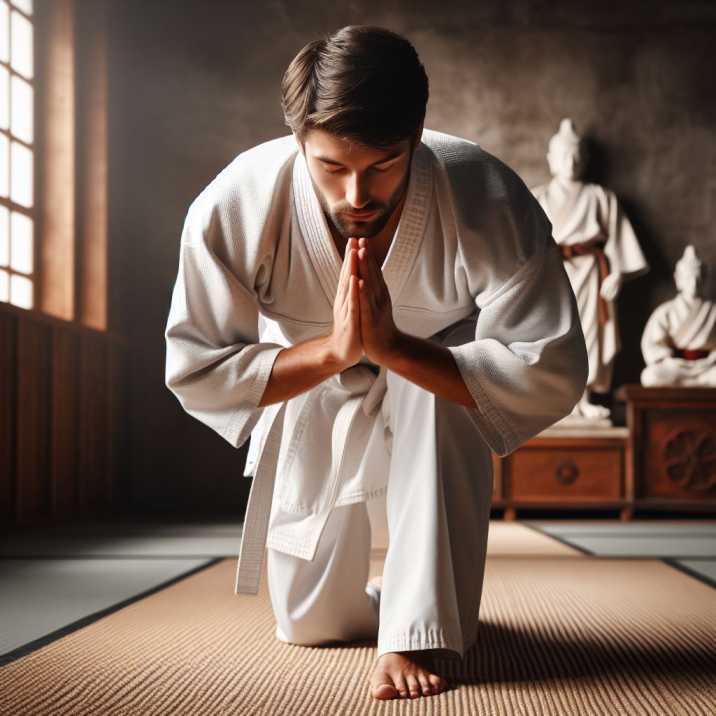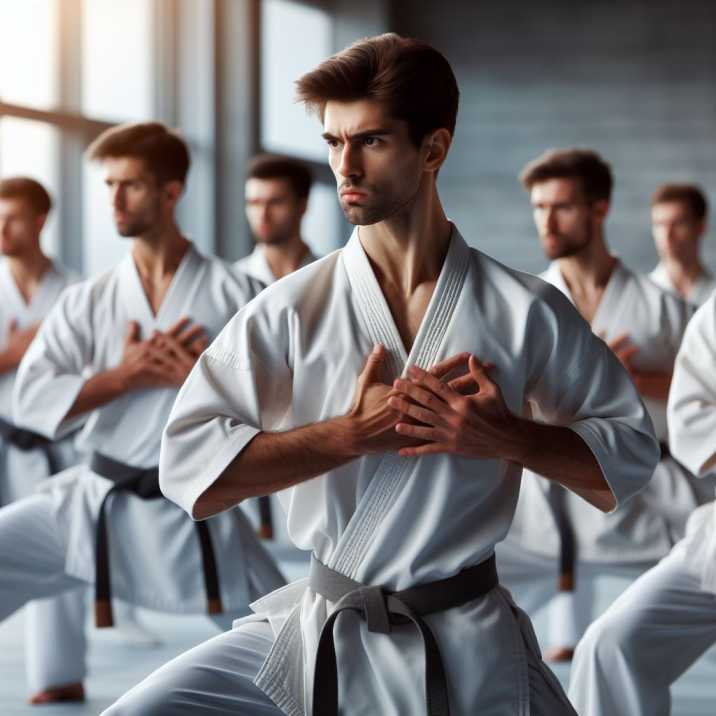Introduction:
Table of Contents
Entering the realm of martial arts, particularly Karate, is not merely about mastering physical techniques; it’s also about embracing a culture of respect, discipline, and etiquette rules. In a Karate dojo, or training hall, these principles are deeply ingrained in every aspect of practice. For beginners, understanding and adhering to these etiquette rules is crucial not only for their progress but also for fostering a sense of unity within the dojo community. In this guide, we’ll delve into the essential etiquette rules every practitioner should follow to ensure a respectful and harmonious training environment.
Etiquette Rules in a Karate Dojo:
1. Bowing:
Bowing is a fundamental aspect of Karate etiquette and serves as a sign of respect towards instructors, fellow practitioners, and the dojo itself. Before entering and exiting the dojo, as well as when approaching or leaving the training area, it is customary to perform a bow. This gesture demonstrates humility and acknowledges the traditions of Karate.

2. Proper Attire:
Wearing the appropriate attire, known as a gi, is essential in Karate practice. Ensure your gi is clean and well-maintained, as it reflects your dedication to the art. Additionally, tie your belt (obi) correctly, with the knot centered and snugly secured. Respect for the uniform signifies respect for the practice.
3. Silence and Focus:
Inside the dojo, maintain a respectful atmosphere by observing silence during instruction and practice sessions. Avoid unnecessary chatter or distractions that may disrupt the concentration of others. Focus your attention on the instructor and follow directions promptly and attentively.

4. Addressing Instructors and Seniors:
Show respect towards instructors and senior practitioners by addressing them with proper titles, such as “Sensei” for instructors and “Senpai” for senior students. When receiving instruction or corrections, respond with a respectful “Osu” to acknowledge understanding and appreciation.
5. Hygiene and Cleanliness:
Personal hygiene is paramount in a Karate dojo to ensure a clean and healthy training environment. Keep fingernails and toenails trimmed, and refrain from wearing jewelry or strong fragrances that may pose safety hazards or distractions to yourself and others.
6. Punctuality:
Arrive early for classes to allow sufficient time for changing, warming up, and mentally preparing for training. Punctuality demonstrates dedication and respect for the dojo’s schedule and your fellow practitioners’ time.
7. Partner Etiquette:
When practicing techniques with a partner, approach each interaction with humility, cooperation, and control. Always seek consent before initiating a technique, and execute it with care to avoid injury. After each practice, express gratitude to your partner with a bow.
Table of Information:
| Etiquette Rules | Description |
|---|---|
| Bowing | A gesture of respect performed upon entering or leaving the dojo, and when interacting with instructors and fellow practitioners. |
| Proper Attire | Wearing a clean and well-maintained gi (uniform) and tying the belt (obi) correctly to signify dedication and respect for the practice. |
| Silence and Focus | Observing silence during instruction and practice sessions to maintain a focused and respectful atmosphere conducive to learning. |
| Addressing | Using proper titles such as “Sensei” for instructors and “Senpai” for senior students to show respect and acknowledgment of hierarchy within the dojo. |
| Hygiene | Maintaining personal hygiene and cleanliness to ensure a safe and healthy training environment for yourself and others. |
| Punctuality | Arriving early for classes to demonstrate dedication and respect for the dojo’s schedule and your fellow practitioners’ time. |
| Partner Etiquette | Approaching interactions with humility, cooperation, and control when practicing techniques with a partner to ensure mutual safety and respect. |
Conclusion:
Mastering the etiquette rules of a Karate dojo is as integral to your journey as mastering the physical techniques. By embracing these principles of respect, discipline, and humility, you not only honor the traditions of Karate but also contribute to a positive and harmonious training environment for yourself and your fellow practitioners.
FAQs:
- Q: Can I wear shoes inside the Karate dojo? A: No, it is customary to remove shoes before entering the dojo to maintain cleanliness and respect for the training space.
- Q: What should I do if I arrive late for a Karate class? A: If you arrive late, wait quietly at the entrance until given permission by the instructor to join the class, then bow and enter discreetly.
- Q: Are there any age restrictions for practicing Karate? A: Karate is suitable for individuals of all ages, with classes tailored to accommodate children, adults, and seniors.
- Q: Is it appropriate to ask questions during Karate class? A: Yes, however, it’s best to save questions for appropriate times, such as during designated Q&A sessions or after class to avoid disrupting the flow of instruction.
- Q: How can I show appreciation to my Karate instructor? A: Express gratitude to your instructor through attentive listening, diligent practice, and respectful behavior both inside and outside the dojo.


